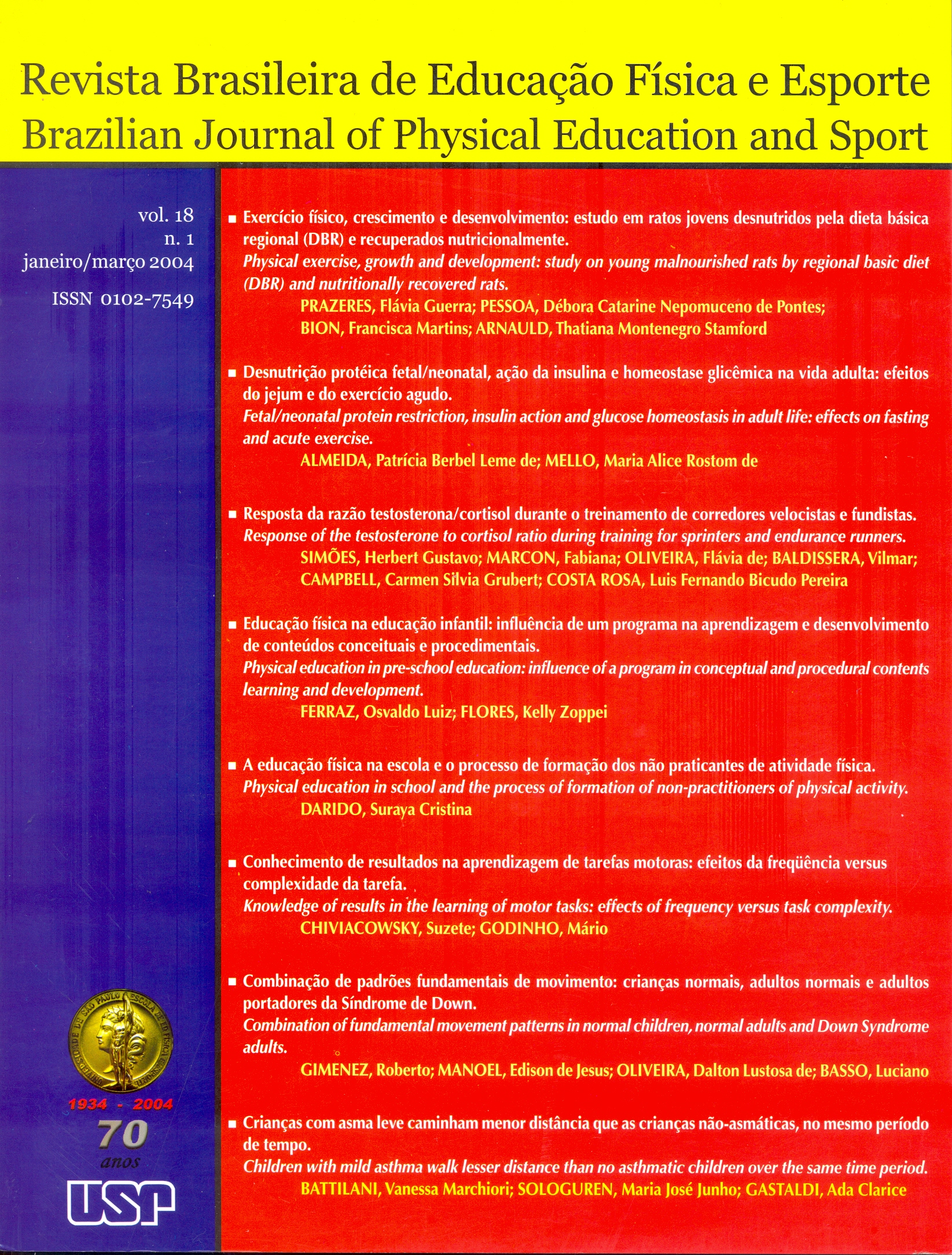Combination of fundamental movement patterns in normal children, normal adults and Down Syndrome adults
DOI:
https://doi.org/10.1590/S1807-55092004000100008Keywords:
Motor Development, Combination of fundamental motor patterns, Down SyndromeAbstract
The present study investigated how individuals with and without Down Syndrome combine fundamental patterns. The criterion adopted to identify the combination was the existence of an overlap between the skills involved so that the transition between them occurred without interruption. Three groups of individuals (GC = seven normal children; GA = seven normal adults and GSD = seven adults with Down Syndrome) took part in the investigation. They had to run with a tennis ball in the hand, and throw it as far as possible. The individuals had three attempts in the task, which were filmed, and the distance attained was also registered. From the video recordings was possible to estimate the speed of running. The majority of individuals combined movement patterns. However, there were qualitative differences in the pattern of combination. Normal adults behaved more consistently. The children's pattern was not different from Down Syndrome individuals.Downloads
Download data is not yet available.
Downloads
Published
2004-03-01
Issue
Section
naodefinida
License
Todo o conteúdo da revista, exceto onde está identificado, está licenciado sob uma Licença Creative Commons (CC-BY)
How to Cite
Gimenez, R., Manoel, E. de J., Oliveira, D. L. de, & Basso, L. (2004). Combination of fundamental movement patterns in normal children, normal adults and Down Syndrome adults . Brazilian Journal of Physical Education and Sport, 18(1), 101-116. https://doi.org/10.1590/S1807-55092004000100008


